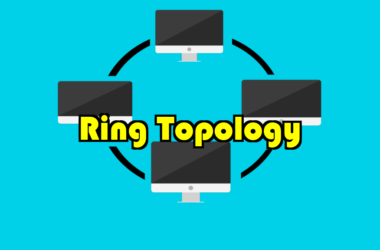In the world of real-time communication protocols, two names stand out: WebRTC and WebSockets. Both serve distinct purposes in facilitating efficient and interactive communication over the web. In this comparison, we have explained each protocol in as much detail as we can, highlighting their features, use cases, advantages, and limitations.
Understanding WebRTC
WebRTC (Web Real-Time Communication) is an open-source project that enables real-time communication directly between web browsers and applications. Initially developed by Google, WebRTC empowers web developers to integrate audio, video, and data sharing capabilities into their web applications without requiring plugins or third-party software.
Features of WebRTC
- Real-Time Audio and Video: WebRTC facilitates smooth audio and video streaming between peers, enabling high-quality, low-latency communication.
- Peer-to-Peer Communication: With WebRTC, data is exchanged directly between users’ browsers, bypassing the need for intermediaries, thus enhancing privacy and reducing latency.
- Cross-Platform Compatibility: WebRTC is supported by major web browsers, including Chrome, Firefox, Safari, and Edge, and this makes accessibility very broad across different platforms.
Use Cases of WebRTC
- Video Conferencing: WebRTC powers popular video conferencing platforms like Zoom and Google Meet, providing users with a smooth, real-time communication experience.
- Live Streaming: Broadcasting live events, webinars, and online classes is made efficient with WebRTC, enabling seamless interaction between presenters and participants.
- Online Gaming: Multiplayer online games use WebRTC for real-time communication among players, enhancing the gaming experience with synchronized audio and video.
Advantages of WebRTC
- Low Latency: Direct peer-to-peer communication reduces latency to its lowest, ensuring real-time responsiveness in audio and video transmission.
- Ease of Implementation: WebRTC offers simple APIs and libraries, making it accessible for developers to integrate real-time communication features into their applications.
- Security: WebRTC incorporates encryption mechanisms to secure data transmission, safeguarding user privacy and confidentiality.
Limitations of WebRTC
- Firewall Traversal: WebRTC may encounter challenges in passing through firewalls and NAT (Network Address Translation), leading to connectivity issues in certain network configurations.
- Browser Support: Major web browsers support WebRTC, but differences in how it’s implemented across versions can create compatibility issues for developers.
- Resource Consumption: Real-time communication applications built with WebRTC may consume significant bandwidth and processing power, particularly in large-scale deployments.
Exploring WebSockets
WebSockets allow both the client and server to send and receive data at the same time through a single, long-lasting connection, unlike standard HTTP connections.
Also Read: Domain Networks Connectivity: A Deep Dive into Structure, Security, and Evolution
Features of WebSockets
- Bi-Directional Communication: WebSockets support simultaneous data transmission between clients and servers, facilitating interactive and real-time applications.
- Low Overhead: WebSockets reduce network overhead and latency by eliminating the need for repeated HTTP handshakes. This Results in more efficient communication.
- Constant Connection: WebSockets maintain a constant connection between the client and server that enables instant data exchange without the need for repeated connection establishment.
Use Cases of WebSockets
- Real-Time Notifications: Websites and applications utilize WebSockets to deliver real-time notifications to users. This helps to provide timely updates on events and activities.
- Live Chat: WebSockets power live chat applications, enabling smooth communication between users in chat rooms, messaging platforms, and collaborative environments.
- Online Gaming: Multiplayer online games uses WebSockets for real-time player interactions, such as game state synchronization, chat, and multiplayer functionality.
Advantages of WebSockets
- Efficiency: By maintaining a constant connection, WebSockets eliminate the overhead of repeated connection establishment. This results in faster and more responsive communication.
- Scalability: WebSockets support thousands of concurrent connections on a single server, making them suitable for scalable and high-performance applications.
- Flexibility: WebSockets are protocol-agnostic, allowing developers to transmit data in various formats, including JSON, XML, and binary data.
Limitations of WebSockets
- Proxy and Firewall Limitations: Some proxy servers and firewalls may restrict or block WebSocket connections, impacting accessibility and reliability in certain network environments.
- Compatibility: While WebSockets are supported by modern web browsers, legacy browsers and older versions may lack support or require polyfills for compatibility.
- Resource Management: Managing many ongoing WebSocket connections can overload server resources and require effective resource management techniques.
Conclusion
In summary, WebRTC and WebSockets offer robust real-time communication options online, each with unique strengths and weaknesses. WebRTC is great in direct user-to-user communication, perfect for video calls and live streaming.
On the other hand, WebSockets are better in bidirectional communication, ideal for real-time notifications, chats, and gaming. Choosing between them depends on the application’s needs. By learning their features and limitations, developers can make a better choice to enhance real-time communication in web apps.









